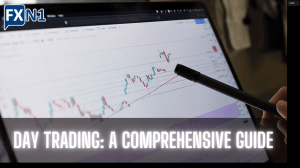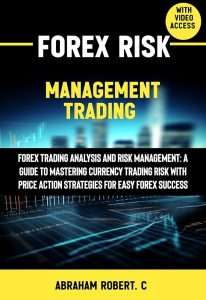A Comprehensive Guide to Forex Trading
Unlock the secrets of forex trading! Learn fundamental strategies, risk management, and more. Our comprehensive guide simplifies complex concepts, empowering you to trade confidently. Start your forex journey today!
Forex trading, or foreign exchange trading, might seem intimidating at first glance. The sheer volume of information available online can be overwhelming. However, with a structured approach and a willingness to learn, anyone can grasp the fundamentals. This comprehensive guide will break down the complexities of forex trading, making it accessible to even the most novice trader. We will explore key concepts, strategies, and risk management techniques, empowering you to make informed decisions in this dynamic market.
Understanding the Forex Market
The forex market is the largest and most liquid financial market globally. Unlike stock markets with centralized exchanges, forex trading occurs over-the-counter (OTC), meaning transactions happen directly between two parties. This decentralized nature contributes to its high liquidity, allowing for rapid execution of trades 24 hours a day, five days a week. This global reach spans major financial centers across different time zones, including London, New York, Tokyo, and Sydney.
Major Currency Pairs
Forex trading involves exchanging one currency for another. The most commonly traded currency pairs are known as majors. These pairs typically include the US dollar (USD) against other major currencies like the euro (EUR), Japanese yen (JPY), British pound (GBP), Swiss franc (CHF), Canadian dollar (CAD), and Australian dollar (AUD). Understanding the dynamics of these pairs is crucial for any forex trader. Their movements are often influenced by various economic and geopolitical factors.
Understanding Pips and Spreads
In forex trading, the smallest price movement is called a pip (point in percentage). For most currency pairs, a pip is the fourth decimal place. The spread is the difference between the bid price (the price at which you can sell a currency) and the ask price (the price at which you can buy a currency). Understanding pips and spreads is essential for calculating profits and losses and managing trading costs effectively. Lower spreads generally indicate better trading conditions.
Essential Forex Trading Strategies
Successful forex trading requires a well-defined strategy. There are numerous strategies available, each with its own set of risks and rewards. It’s crucial to choose a strategy that aligns with your trading style, risk tolerance, and overall financial goals. Let’s explore a few popular strategies.
Scalping
Scalping is a short-term trading strategy that aims to profit from small price movements. Scalpers typically hold positions for a very short period, often just seconds or minutes. This requires quick decision-making, technical analysis skills, and a high level of market awareness. While potentially lucrative, scalping is also high-risk due to its reliance on rapid price fluctuations.
Day Trading
Day trading involves opening and closing positions within a single trading day. Day traders analyze market trends and execute trades based on short-term price movements. Unlike scalping, day trading often involves holding positions for several hours. It requires a thorough understanding of technical analysis and market sentiment. Effective risk management is crucial to mitigate potential losses.
Swing Trading
Swing trading involves holding positions for several days or even weeks. Swing traders identify potential price movements based on longer-term trends and chart patterns. They aim to capture significant price swings, often benefiting from overnight price movements. This strategy requires patience and a strong understanding of fundamental analysis alongside technical analysis.
Position Trading
Position trading is a long-term strategy where traders hold positions for months or even years. This strategy relies heavily on fundamental analysis and long-term market trends. Position traders are less concerned with short-term price fluctuations and focus on capturing significant long-term gains. Risk management is particularly crucial in this strategy due to the extended duration of positions.
Risk Management in Forex Trading
Effective risk management is paramount in forex trading. Without proper risk management, even the most profitable strategies can lead to significant losses. Here are some key aspects of risk management:
Using Stop-Loss Orders
A stop-loss order automatically closes a position when the price reaches a predetermined level, limiting potential losses. This is a crucial tool for protecting your capital and preventing significant drawdowns. Setting appropriate stop-loss levels is critical and should be based on your risk tolerance and the specific trade.
Setting Take-Profit Orders
A take-profit order automatically closes a position when the price reaches a predetermined level, securing profits. This helps lock in gains and avoids potential reversals. Determining appropriate take-profit levels requires careful consideration of market conditions and your trading strategy.
Diversification
Diversification is a crucial risk management technique that involves spreading your investments across multiple currency pairs or asset classes. This helps reduce the impact of potential losses in any single position. Don’t put all your eggs in one basket, as they say. Strategic diversification can significantly mitigate overall risk.
Leverage
Leverage allows traders to control larger positions with smaller amounts of capital. While leverage can amplify profits, it can also magnify losses. It’s essential to use leverage cautiously and only to the extent you’re comfortable with. Over-leveraging can quickly lead to significant financial difficulties.
Fundamental vs. Technical Analysis
Forex traders use various analytical methods to make trading decisions. Two primary approaches are fundamental analysis and technical analysis.
Fundamental Analysis
Fundamental analysis involves examining macroeconomic factors that influence currency values; This includes economic data like interest rates, inflation, GDP growth, employment figures, and political events. Fundamental analysts try to predict future currency movements based on these underlying factors.
- Economic Indicators: Understanding key economic indicators is crucial for fundamental analysis.
- Geopolitical Events: Global events significantly impact currency values.
- Central Bank Policies: Monetary policy decisions by central banks influence interest rates and currency exchange rates.
Technical Analysis
Technical analysis involves studying price charts and historical data to identify patterns and trends that predict future price movements. Technical analysts use various indicators and chart patterns to make trading decisions. This approach focuses solely on price action and volume without considering fundamental economic factors.
- Chart Patterns: Identifying recurring chart patterns such as head and shoulders, triangles, and flags can provide insights into potential price movements.
- Technical Indicators: Using indicators like moving averages, RSI, MACD, and Bollinger Bands can help identify overbought or oversold conditions and potential trend reversals.
- Support and Resistance Levels: Identifying support and resistance levels can help traders determine potential entry and exit points.
Choosing a Forex Broker
Selecting a reputable forex broker is crucial for successful trading; A good broker offers competitive spreads, reliable execution, robust security measures, and excellent customer support. Consider the following factors when choosing a broker:
Regulation and Licensing
Ensure the broker is regulated by a reputable financial authority. Regulation provides a layer of protection for traders and helps ensure the broker operates ethically and transparently.
Spreads and Commissions
Compare spreads and commissions offered by different brokers. Lower spreads and commissions can significantly impact your profitability.
Trading Platform
The trading platform should be user-friendly, reliable, and offer a range of tools and features. Consider factors like charting capabilities, order execution speed, and available indicators.
Customer Support
Access to reliable and responsive customer support is essential, especially when dealing with technical issues or questions about your account.
The Importance of Education and Practice
Successful forex trading requires continuous learning and practice. Never stop learning; the market is constantly evolving. Start with demo accounts to practice your strategies without risking real capital. Master the fundamentals, refine your strategies, and develop a solid risk management plan before venturing into live trading. Remember that forex trading involves risks, and losses are possible. Only invest what you can afford to lose.
Forex trading is a dynamic and challenging field, but with the right knowledge, skills, and discipline, it can be a rewarding experience. By understanding the fundamentals, employing effective strategies, and practicing sound risk management, you can navigate this exciting market and increase your chances of success. Consistent learning and adaptation are key to long-term success in forex trading. Stay informed, stay disciplined, and always prioritize risk management. Your journey to mastering forex trading begins now.
Remember that this guide provides general information and should not be considered financial advice. Conduct thorough research and seek professional advice before making any investment decisions. The forex market is complex, and it’s essential to understand the inherent risks involved before participating.
Consistent effort and a commitment to continuous learning are paramount for navigating the complexities of the forex market successfully. By dedicating yourself to understanding both the technical and fundamental aspects of trading, and by consistently refining your strategies, you can lay the groundwork for long-term success in this challenging but potentially rewarding endeavor. The journey is ongoing, and continuous learning is the key to unlocking the full potential of forex trading.
Always remember that responsible trading involves careful consideration of your risk tolerance and a commitment to staying updated on market trends and developments. The forex market demands attention, discipline, and a willingness to adapt. By embracing these principles and consistently striving for improvement, you will increase your chances of achieving your financial objectives in this dynamic and ever-changing arena.
Finally, never underestimate the importance of patience and perseverance. Successful forex trading is not a get-rich-quick scheme. It requires dedication, time, and a willingness to learn from both successes and setbacks. With the right approach and a commitment to continuous learning, you can gradually build your knowledge and experience to achieve sustainable success in this complex and exciting market.







